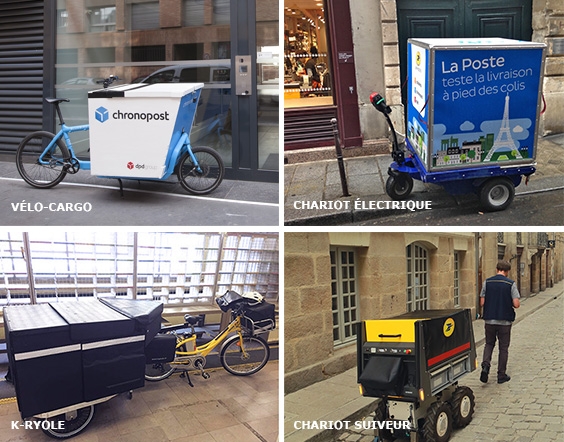Today, urban logistics planning is about trying to find solutions that limit everyone’s travel footprint and, if journeys can’t be avoided, planning so that they don’t involve CO2 emissions, or even energy consumption.
By offering customers the chance to collect their parcels as part of their daily commute at pickup lockers, without having to go far out of their way, this makes their life easier and reduces their energy consumption at the same time.
And to help mail carriers deliver growing volumes of parcels, as well as completing their own rounds, La Poste is looking at new electronic equipment capable of carrying large loads, such as robot trolleys, which follow mail carriers independently along their rounds and can transport up to 150 kg, as well as the K-Ryole, a motorised trailer for electric bikes with a payload of up to 250 kg. This equipment may soon be added to the 7,000 electric cars, 4,000 Staby scooters, 1,000 Quadeo buggies and 24,000 electric bicycles already used today by La Poste.


